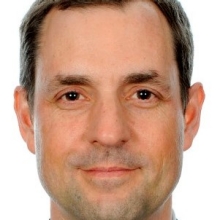
Blogs
Climate risk management requires data and knowledge. The digital revolution has changed the daily lives of billions of people. But what about the billions who have been left out of this technological revolution?
Building on the idea of dividends of resilience, people working in disaster risk management are increasingly looking beyond avoided losses to the benefits gained even if disaster doesn’t strike for many years.
The latest cyclical warming of Pacific Ocean waters, first observed centuries ago and formally tracked since 1950, began earlier this year and already has been felt across Asia, Africa and Latin America.
Despite its thousand-year history, the devastation associated with El Niño is not inevitable. Progress made by many other countries since the last major event, in 1997-98, shows that we can get a grip on its effect – and others caused by climate trends.
Local and international scientists agree that we can expect to have a major earthquake in the region. We don’t know exactly when it will strike, but we know it is closer than we think.
When I first heard about OpenStreetMap (OSM) – the so called Wikipedia of maps, built by volunteers around the world – I was skeptical of its ability to scale, usability in decision making, and ultimate longevity among new ideas conceived in the digital age. Years later, having working on many disaster risk management initiatives across the globe, I can say that I am a passionate advocate for the power of this community.
Sub-Saharan Africa is making significant economic and development strides. Yet, natural disasters, combined with the effects of climate change, rapid urbanization, and conflict situations are threatening these gains, keeping vulnerable and poor communities in a chronic cycle of poverty.
The “digital humanitarian” movement took off in 2010, when thousands of volunteers used social media, text messages, and satellite imagery to support search-and-rescue efforts and human relief operations in Haiti. The data they gathered was used to create unique digital crisis maps that reflected the situation on the ground in near real-time.
How governments can ensure that low-income farmers are financially protected against natural disasters, such as droughts, was at the heart of a panel discussion at the “Global Index Insurance Conference,” which concluded earlier this week in Paris.

 John Roome
John Roome
 Francis Ghesquiere
Francis Ghesquiere
 Anna Locke
Anna Locke
 Axel van Trotsenburg
Axel van Trotsenburg
 Nicholas Jones
Nicholas Jones
 Joaquin Toro
Joaquin Toro
 Alanna Simpson
Alanna Simpson
 Christoph Pusch
Christoph Pusch
 Ted Chu
Ted Chu
 Daniel Clarke
Daniel Clarke
 Felix Lung
Felix Lung
 Frederico Pedroso
Frederico Pedroso
 Joaquin Toro
Joaquin Toro
 Eric Lancelot
Eric Lancelot